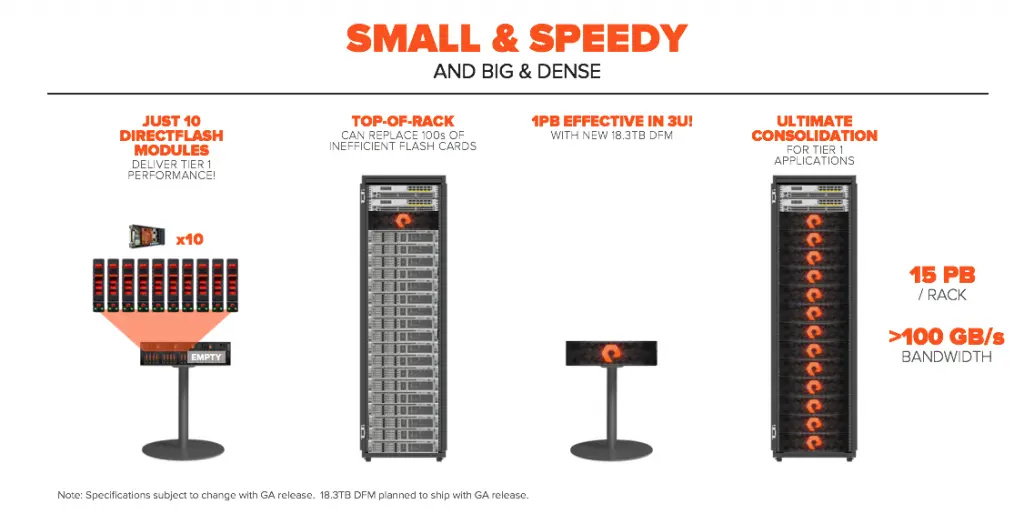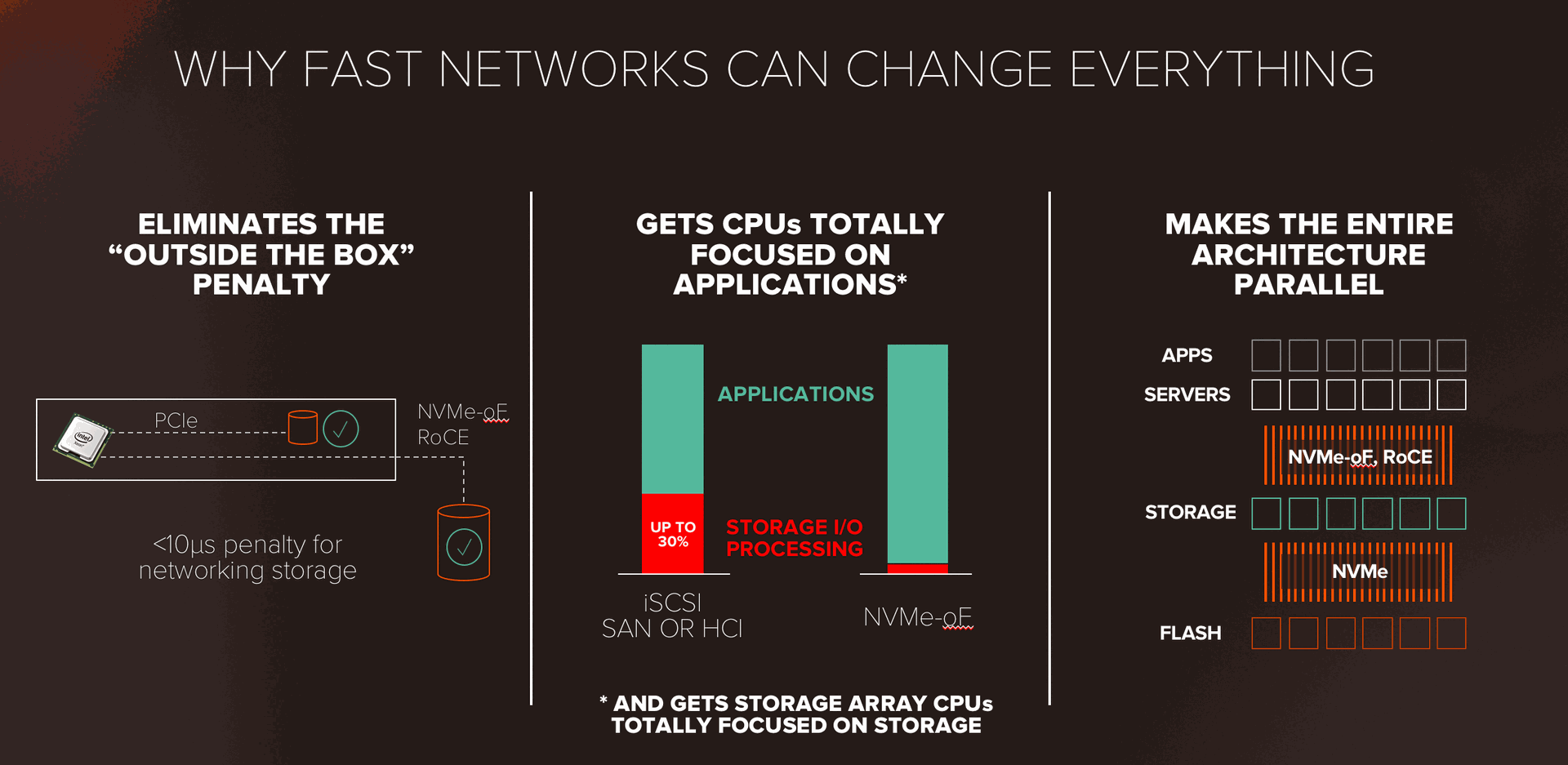Oracle's Exadata platform has long been hailed as one of the premier database solutions for high-performance and mission-critical workloads. Built specifically to optimize Oracle databases, Exadata offers enhanced performance, scalability, and efficiency. However, as organizations continue to look for more flexible, cloud-compatible, and cost-efficient storage options, many are exploring alternative infrastructures that can deliver Exadata-like performance without the proprietary lock-in.
Enter Pure Storage, a leading provider of all-flash storage solutions designed to support modern workloads, including demanding Oracle databases. By leveraging Pure Storage’s FlashArray and FlashBlade architectures, organizations can achieve the performance, scalability, and simplicity of Exadata, while gaining the flexibility to support broader workloads across hybrid and multi-cloud environments.
In this blog, I’ll explore how Pure Storage can be used to create an Exadata-like environment for Oracle databases and why it’s a compelling option for enterprises seeking a modern, scalable infrastructure.
Why Move to Pure Storage for Oracle Database Workloads?
While Exadata is highly optimized for Oracle workloads, there are several reasons why organizations are exploring alternatives like Pure Storage to run Oracle databases:
- Scalability: Pure Storage solutions are designed to scale efficiently without the need for specialized hardware, allowing organizations to grow their database environments as needed.
- Cloud Compatibility: Pure Storage’s integration with both on-premises and cloud infrastructures provides greater flexibility for hybrid and multi-cloud deployments, enabling organizations to move Oracle workloads seamlessly between environments.
- Cost Efficiency: The proprietary nature of Exadata can lead to high acquisition and maintenance costs. Pure Storage offers more cost-effective solutions while delivering similar levels of performance.
- Performance: Pure Storage’s NVMe-based all-flash architecture offers extremely low latency and high throughput, making it well-suited for demanding Oracle workloads, including Online Transaction Processing (OLTP) and decision-support systems (DSS).
- Simplicity: Pure Storage offers a simpler, more agile infrastructure with evergreen storage that stays modern without the need for disruptive migrations or forklift upgrades.

Achieving Exadata-Like Performance on Pure Storage
Pure Storage’s FlashArray//X and FlashBlade systems provide the foundation for high-performance Oracle database deployments. Here’s how Pure Storage delivers Exadata-like performance:
1. NVMe Architecture for High Throughput and Low Latency
Pure Storage’s all-flash arrays leverage NVMe technology, which is optimized for low-latency, high-throughput workloads. By using DirectFlash technology and bypassing traditional storage bottlenecks, Pure Storage can provide performance comparable to, or even exceeding, Exadata for Oracle workloads.
- Low Latency: With latency as low as sub-1 millisecond, Pure Storage offers the consistent IOPS performance necessary for mission-critical Oracle databases.
- High Throughput: For data-intensive workloads such as OLTP, Pure Storage delivers up to millions of IOPS, ensuring that even the most demanding queries and transactions can be processed with minimal delay.

2. ActiveCluster for High Availability and Disaster Recovery
High availability (HA) and disaster recovery (DR) are essential for enterprise-grade database workloads, and this is an area where Exadata shines. Pure Storage’s ActiveCluster technology provides the same level of high availability without the need for specialized Exadata hardware.
- Zero RPO and RTO: ActiveCluster ensures continuous availability of Oracle databases with zero recovery point objective (RPO) and recovery time objective (RTO), offering a reliable solution for critical workloads.
- Synchronous Replication: Pure Storage’s ActiveCluster provides fully synchronous replication between two sites, ensuring that your Oracle database remains operational even in the event of a site failure.
3. Dynamic Scaling with Pure Storage
Exadata’s scalability is one of its key advantages, but Pure Storage offers similar scalability without the proprietary limitations. With FlashArray//X, organizations can start small and scale up as needed to accommodate growing Oracle database workloads.
- Thin Provisioning and Compression: Pure Storage’s thin provisioning and data reduction capabilities allow for greater storage efficiency, maximizing the use of available capacity without compromising performance.
- Non-disruptive Upgrades: Pure Storage’s infrastructure allows organizations to scale and upgrade their Oracle environments without downtime, eliminating the need for disruptive hardware refreshes or migrations.
Simplified Management and Automation
Exadata requires specialized knowledge and resources for deployment and management, whereas Pure Storage emphasizes simplicity and automation.
1. Automated Database Management with Pure1
Pure1, Pure Storage’s AI-powered management platform, offers a user-friendly interface for monitoring, managing, and automating database operations. For Oracle DBAs and IT teams, this means easier database management with fewer resources.
- Predictive Analytics: Pure1 leverages machine learning to predict potential performance issues and recommend optimizations, reducing the manual effort required to maintain optimal Oracle database performance.
- Proactive Monitoring: Pure1 provides real-time visibility into Oracle database performance, offering proactive alerts and insights that help ensure the database environment runs smoothly.
2. Integration with Oracle Ecosystem
Pure Storage integrates seamlessly with the Oracle ecosystem, providing support for Oracle RAC, ASM, and Data Guard, as well as compatibility with Oracle Enterprise Manager.
- Oracle RAC: Pure Storage supports Real Application Clusters (RAC), enabling organizations to deploy highly available Oracle databases on FlashArray//X. Pure’s low-latency, high-throughput architecture enhances the performance of RAC deployments.
- Oracle Data Guard: Pure Storage supports replication with Oracle Data Guard for disaster recovery, ensuring that Oracle databases are protected from downtime or data loss.
Cost Efficiency and Evergreen Storage
One of the key drawbacks of Exadata is its high cost. Both the initial capital investment and ongoing operational costs can be prohibitive for many organizations. Pure Storage, by contrast, offers a cost-effective solution through its Evergreen Storage program.
- No Forklift Upgrades: With Evergreen Storage, Pure Storage customers can upgrade their hardware and software non-disruptively, without the need for costly and time-consuming forklift upgrades.
- Reduced Maintenance Costs: Pure Storage’s proactive support model and automated management reduce the need for specialized DBA and IT resources, cutting down operational costs.
- Capacity Efficiency: Through deduplication and compression, Pure Storage reduces the storage footprint required for Oracle databases, translating into lower overall costs for storage infrastructure.
Cloud-Ready Oracle Database Deployments on Pure Storage
As organizations look to move their Oracle workloads to the cloud or operate in a hybrid cloud model, Pure Storage offers seamless integration with public cloud providers.
- Hybrid Cloud Flexibility: Pure Storage supports hybrid cloud environments, enabling Oracle databases to run both on-premises and in the cloud with ease. This allows organizations to adopt a cloud strategy without needing to overhaul their existing infrastructure.
- Cloud Block Store: Pure Storage’s Cloud Block Store enables organizations to replicate Oracle databases to the cloud for disaster recovery, testing, or cloud-native application development. This allows for greater agility and flexibility in managing Oracle workloads.
Conclusion: Achieve Exadata-like Performance and Flexibility with Pure Storage
While Oracle Exadata remains a leading platform for high-performance Oracle databases, Pure Storage provides a compelling alternative that offers similar performance and scalability, with greater flexibility and cost efficiency. By leveraging Pure Storage’s all-flash infrastructure, organizations can deploy Oracle databases with the confidence that they are operating on a modern, high-performance, and cloud-compatible platform.
With features like NVMe architecture, ActiveCluster, and Evergreen Storage, Pure Storage delivers the speed, scalability, and reliability required for mission-critical Oracle workloads, all while reducing the complexity and cost associated with traditional Exadata deployments.
If your organization is looking to modernize its Oracle database infrastructure, consider Pure Storage as a scalable, high-performance alternative that supports your digital transformation and future-proof data strategy.
Interested in learning how Pure Storage can accelerate your Oracle databases? Reach out to ComputingEra to explore how we can help you create an Exadata-like environment on Pure Storage!